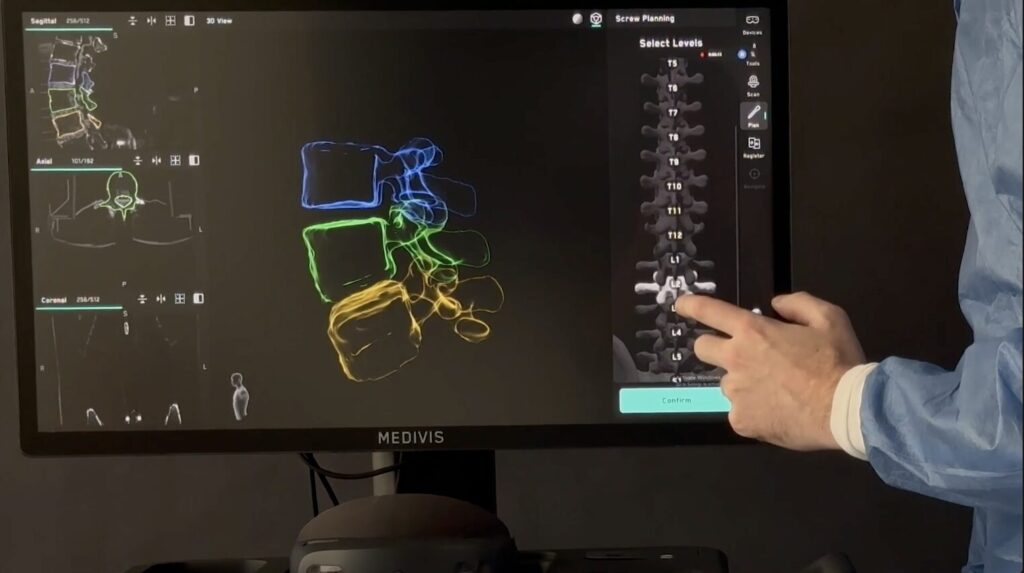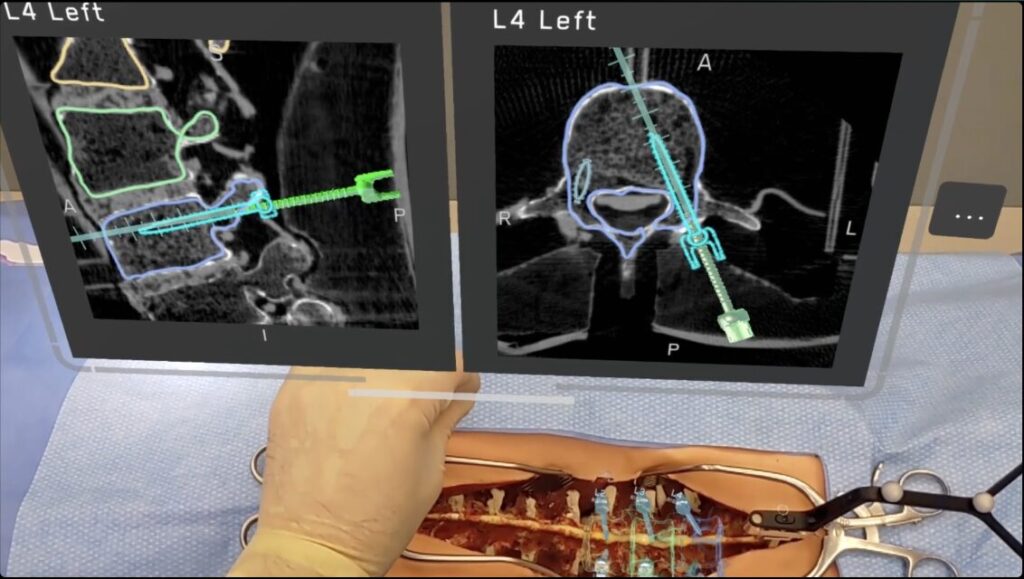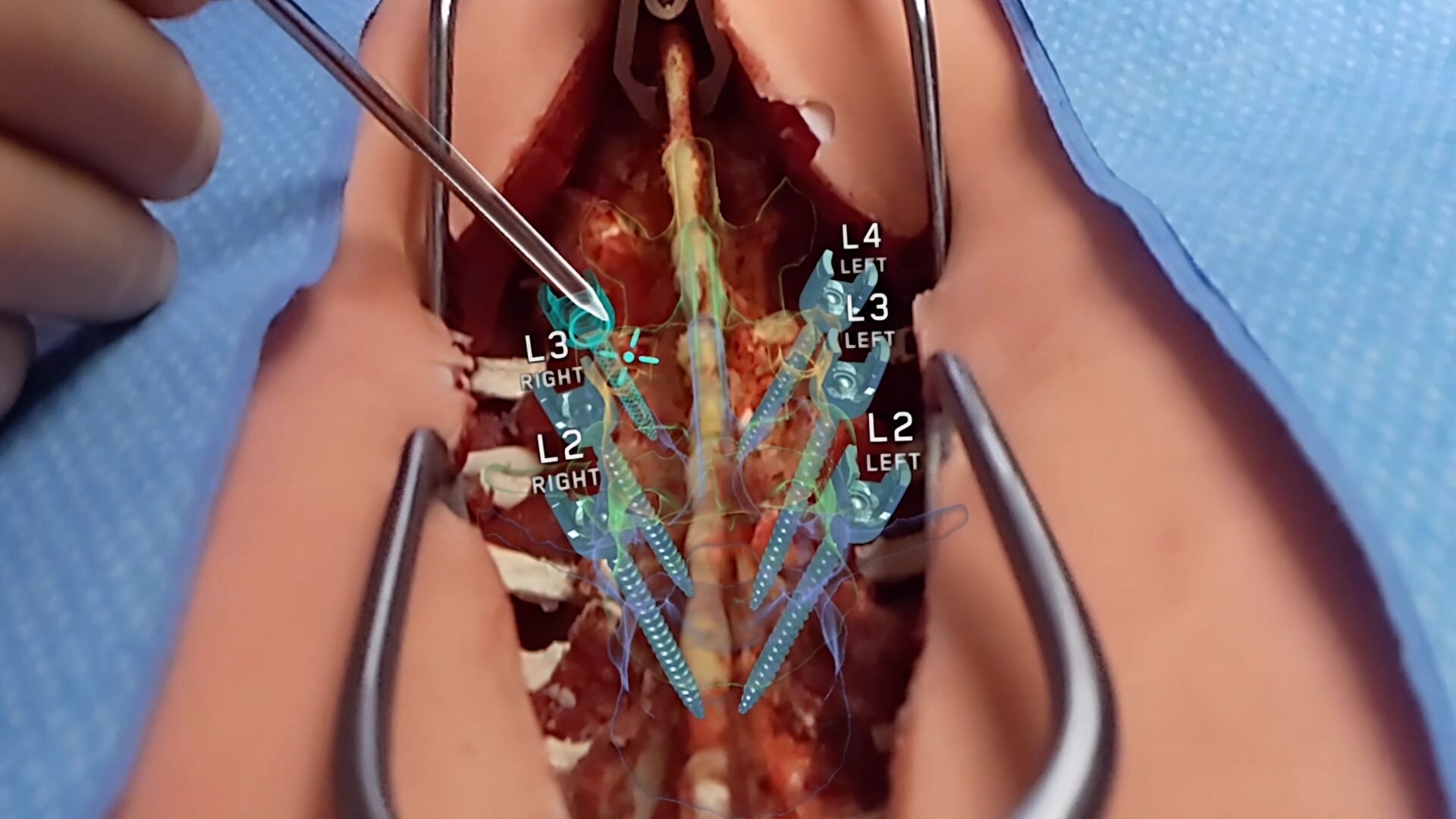Even for those not fluent in tech, the idea of seeing a CT scan as a 3D hologram floating over the patient is simply wow. Medivis, a leading surgical intelligence company, has just received FDA 510(k) clearance for its Spine Navigation platform—and it’s now available in U.S. hospitals and surgical centers. This marks the beginning of a new era in medicine, where artificial intelligence and augmented reality come together to enhance both surgeon and patient experiences.
Musumeci Online – The Podcast. It is perfect for driving, commuting, or waiting in line!

Bringing the Future to Life
At its core, the platform overlays holographic imaging onto the patient’s spine during both open and minimally invasive procedures. Picture a GPS but for your spine—projecting precise guidance on where to place screws, exactly how to navigate delicate nerves, and how to preserve healthy tissue .
It blends:
- AI-driven vision that analyzes images in real time,
- AR glasses that display vital data hands‑free,
- Hand tracking and voice commands so surgeons stay focused on the patient
Why This Matters—In Everyday Language
Think of it like a plumber using a laser-level and digital interface instead of guesswork. With sub‑millimeter accuracy, surgeons can reduce risk, improve outcomes, and keep X-ray exposure low—much like having a map that shows every underground pipe.
When Medivis says it’s accurate to within a hair’s width, imagine threading a needle with your eyes closed—only here, safety and clarity are front and center.

Easy, Ergonomic Integration
Surgeons can slip on a lightweight AR headset—no more neck strain or screen‑glancing. With visible overlays and real-time interaction, the workflow feels smooth and natural.
Plus, the system fits into existing hospital setups. It works with standard CT, MRI, and fluoroscopy machines and takes up minimal space—even in tight ORs or ambulatory centers.

Inspiring Confidence & Wider Adoption
For patients, the benefits are clear: more tailored surgeries, fewer complications, and shorter recovery times. Hospitals and clinics gain efficiency, cost savings, and advanced tech that pays for itself.
“Surgery is entering a new era of advanced computing that enhances precision, speed, and efficiency” – Dr. Christopher Morley (Medivis President)
And CEO Dr. Osamah Choudhry added their vision: “We envision a future where surgical navigation transcends boundaries…”
Beyond the Spine: What’s Next?
Medivis already holds FDA clearance for other AR solutions like SurgicalAR (for visualization) and is working on cranial and prostate navigation systems. The spine launch is just the start of a wave pushing medical frontiers forward.
Imagine performing complex surgeries—brain tumors, heart valves, even spinal hardware insertion—all with holographic AI lighting the way.
How It Works—In Simple Steps
- Prepare: Load patient scans into the system.
- Plan: Choose screw positions and visualize hinge angles.
- Register: Match the hologram precisely to the patient’s body.
- Navigate: Use real-time holographic overlays to guide tools accurately.
This clear, four-stage process puts surgical confidence within reach—like having step-by-step GPS directions mapped onto a city block.


Leave a Reply